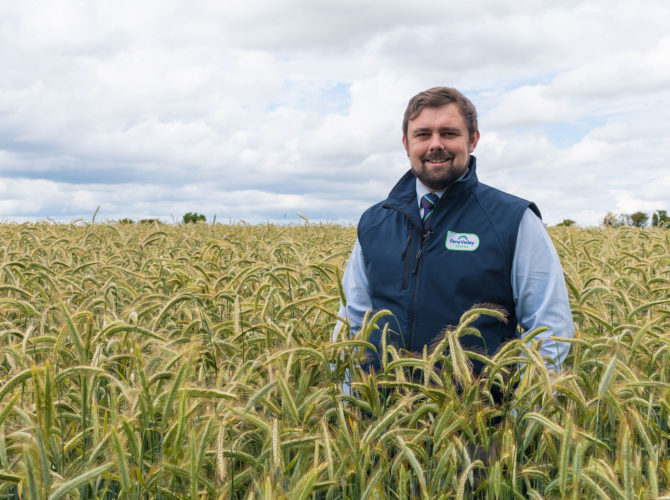Making The Most of Wholecrop Silage.
20th July 2022

Winter cereal crops are now fast approaching the stage suitable for cutting for wholecrop. Feeding wholecrop cereal silage alongside quality grass silage can significantly increase the animal’s dry matter intake and help maximise rumen function. For these reasons wholecrop is becoming an increasingly popular feed on livestock farms.
Cereals crops such as wheat, barley, oats, and rye have the potential to create a starch rich forage with a high dry matter yield from a single cut. A crop of wholecrop winter wheat will yield as much dry matter as three cuts of grass silage, while the starch can also reduce the need for purchased concentrates reducing costs this winter. Wholecrop cereals also provide a useful source of effective fibre, which is essential for healthy rumen function and is increasingly important to balance young highly digestible grass silage, negating the need to purchasing straw.
Wholecrop should be harvested when the crop is between 30-40% dry matter with the grain at the soft cheddar stage giving the optimal balance in terms of yield, starch, and digestibility. Ideally the crop should be harvested with a direct cut harvester to prevent grain losses, if you plan to bale the crop you should cut slightly earlier and avoid conditioning the crop with the mower to avoid grain shedding. As the grain ripens the starch levels will improve but a harvester with a crop processor will be required to mill the grain so the animal can digest it.
When it comes to ensiling wholecrop, the combination of higher dry matter and straw means it can be harder to compact and ensile. If it is not compacted properly, there will be a higher risk of oxygen pockets within the clamp, which means a higher risk of yeast and mould activity, increasing the likelihood of spoilage in the clamp. Preventing spoilage and waste is important in any year, but especially this year due to the high feed prices. On average, 15% of what goes into a clamp is lost before feeding out and so it is crucial to use an inoculant that is specifically designed to inhibit yeast and mould activity. Traditional forage inoculants only provide acidifying bacteria that produce lactic acid, but this does not work for wholecrop silage, as the physical nature of the crop predisposes it to spoilage during feed out.
Magniva Platinum Wholecrop, contains two categories of bacteria, providing a unique combination of antifungal bacteria L. hilgardii, plus L. buchneri, and acidifying bacteria P. pentosaceus. This combination of bacteria produces lactic, acetic, and propionic acid which leads to rapid acidification during ensiling, as well as the stabilisation of the silage during feeding. Adding the incorrect silage inoculant to wholecrop can potentially lead to challenges during feed out.
Find out more about ensiling wholecrop and Magniva silage inoculants by contacting your local Fane Valley Agronomy & Forage specialist or call 028 9261 0485.

